Occupational Safety Training in Essential Oil Manufacturing Factory
99,000 ₫
Note: The above price is calculated for one person, the price may fluctuate depending on the number of trainees participating in the course and the movement of the market. For more accurate pricing support, please refer to the quotation table or contact our consulting staff directly.
Occupational safety is an important issue in essential oil manufacturing factories and needs to be addressed promptly to ensure the health and safety of workers and enhance the reputation of enterprises. The Occupational Safety Training course is one of the effective solutions to raise awareness about preventing occupational accidents for workers when participating in essential oil manufacturing.
Table of Contents
Toggle1. Overview of essential oils
a. What are essential oils?
- Essential oil is a type of liquid with a characteristic aroma extracted from plants such as flowers, leaves, stems, roots, bark, seeds, grass, fruits, seeds, etc. Essential oils are separated from plants through extraction processes such as steam distillation, cold pressing, hot pressing, or by using chemical solvents. Essential oils are used in many different fields such as in the chemical industry, cosmetics manufacturing, health care, medicine, food and beverages, and in beauty products.
- The essential oil manufacturing industry in Vietnam is developing and has great potential because our country has many rare herbs. The types of essential oils manufactured in Vietnam include cajeput oil, peppermint oil, lemongrass oil, cinnamon oil, ginger oil, mugwort oil, basil oil, star anise oil and many other types of essential oils.
- However, the essential oil manufacturing industry in Vietnam still faces many challenges such as the quality of essential oils not being guaranteed, limited infrastructure and manufacturing technology, low domestic consumption demand and especially competition with imported essential oils from other countries.

b. Types of essential oil manufacturing machinery
The types of essential oil manufacturing machinery depend on the extraction and manufacturing method of the essential oil. Here are some types of machinery commonly used in the essential oil manufacturing industry:
- Mechanical press: Mechanical presses are used to extract essential oils from fruit seeds, seeds, leaves or roots of plants by using mechanical force.
- Steam distiller: A steam distiller uses the principle of steam to extract essential oils. Plant material is put into a container, water is boiled and the steam will pass through the material, taking with it the essential oil part in the material.
- Solvent extraction machine: This machine uses solvents to extract essential oils. Plant material is put into a container, then a solvent is introduced to wash the material and extract the essential oil from the material.
- Fermentation machine: A fermentation machine is used to manufacture essential oils from fermented alcohol. Materials are put into a fermentation tank, then yeast is added to perform the fermentation process and manufacture essential oils.
- Drying machine: A drying machine is used to dry plant materials before extracting essential oils.

c. Typical essential oil manufacturing enterprises
In Vietnam, there are many essential oil manufacturing enterprises, including some typical ones such as:
- Quang Nam Essential Oil Joint Stock Company
- Song Hau Essential Oil Joint Stock Company
- Hoa Binh Essential Oil Joint Stock Company
- Viet Nhat Essential Oil Joint Stock Company
- Duc Giang Essential Oil Joint Stock Company
These enterprises mainly manufacture essential oils from traditional Vietnamese plants such as cajeput, grapefruit, orange, cajeput, cinnamon, mugwort, sage, star anise, etc. With modern manufacturing processes, these enterprises have produced high-quality essential oil products that are favored in the domestic and international markets.
d. Specific jobs in an essential oil manufacturing factory
Group 1
- General director, deputy general director, department head in an essential oil manufacturing factory.
Group 2
- Safety officer: manages safety in the factory, designs safety procedures, supervises and urges employees to comply with safe working procedures.
Group 3
- Raw material processing: Raw materials for essential oil manufacturing can be herbs, fruits, seeds, wood, etc. Raw material processing includes separating leaves, fruits, seeds, wood, bark, roots, tubers, leaves, etc. from herbs or plants, packaging, and transporting them to the factory.
- Pre-processing: After receiving the raw materials, workers perform pre-processing such as selecting raw materials, washing, cutting into small pieces, and drying.
- Putting into the essential oil press: The pre-processed raw materials will be put into the essential oil press to extract the essential oil.
- Oil separation: After the essential oil has been pressed, workers must separate the essential oil from the residue.
- Essential oil filtration: The essential oil will be filtered through filters to remove impurities.
- Packaging and preservation: The essential oil is packaged and boxed for preservation and distribution.
- Cleaning and maintenance: Workers must regularly clean and maintain machinery to ensure that the equipment is always working well and is safe.
Group 4
- Office work, service, sales, marketing.
- Production management, quality management, human resource management, material management, financial accounting management.
- Research and development of new products, design of product packaging and models.

2. Overview of the occupational safety training course for essential oil manufacturing
Within the scope of this article, we focus on issues related to group 3, because group 3 is the group directly involved in the manufacturing process, bearing the highest risk of occupational safety. See more about the other groups here
a. What is group 3 occupational safety training?
- Group 3 occupational safety training consists of sessions that equip workers with awareness of how to prevent occupational accidents.
- The occupational safety training course will help workers recognize and prevent dangers, and limit the risk of occupational accidents during work.
REGISTER FOR OCCUPATIONAL SAFETY TRAINING SERVICE
b. Training duration
Initial safety training duration
- The total training duration is at least 24 hours, including the examination time.
- 8 hours of theoretical study on the system of policies and laws on occupational safety and health
- 8 hours of theoretical study on basic knowledge of occupational safety and health
- 4 hours of theoretical study on specialized training content
- 2 hours of practical study on specialized training content
- 2 hours of theoretical examination at the end of the training course
The safety training center will distribute the time into many training sessions depending on the time arrangement for employees. But usually, there will be 6 training sessions, and the course will take place for 3 days, provided that the manufacturing company can arrange continuous study time.
Periodic safety training duration
- Before the occupational safety card expires, if workers want to have it re-issued, they must undergo a periodic occupational safety training course, with the periodic safety training duration being at least 50% of the initial safety training duration.
Explanation: The total periodic occupational safety training duration is at least 12 hours, including the examination time. After completing the periodic training course and passing the examination, workers will have their occupational safety card re-issued or renewed.
c. Content of the training course
| No. | TRAINING CONTENT | TRAINING DURATION (HOURS) | |||
| Total | Of which | ||||
| Theory | Practice | Examination | |||
| I | System of policies and laws on occupational safety and health | 8 | 8 | 0 | 0 |
| 1 | Overview of the system of legal documents on occupational safety and health. | 6 | 6 | ||
| 2 | System of technical standards and regulations on occupational safety and health. | 1 | 1 | ||
| 3 | Specific regulations of state management agencies on occupational safety and health when building, expanding or renovating works, facilities for manufacturing, using, preserving, storing and inspecting types of machinery, equipment, materials, and substances with strict requirements on occupational safety and health. | 1 | 1 | ||
| II | Basic knowledge of occupational safety and health | 8 | 8 | 0 | 0 |
| 1 | Basic knowledge of dangerous and harmful factors at the workplace. | 4 | 4 | ||
| 2 | Methods to improve working conditions. | 1 | 1 | ||
| 3 | Safety culture in manufacturing and business. | 1 | 1 | ||
| 4 | Rights and obligations of employers, employees; policies and regimes on occupational safety and health for employees; functions and duties of the occupational safety and health network. | 1 | 1 | ||
| 5 | Occupational safety and health regulations, signs, safety and health signs and use of safety equipment, personal protective equipment; professional skills, first aid for occupational accidents, prevention of occupational diseases. | 1 | 1 | ||
| III | Specialized training content | 6 | 4 | 2 | 0 |
| General knowledge about types of machinery, equipment, and substances that generate dangerous and harmful factors; analysis, assessment, and management of occupational safety and health risks, safe working procedures with machinery, equipment, and substances with strict requirements on occupational safety and health. | 6 | 4 | 2 | ||
| IV | Examination of occupational safety training content at the end of the course | 2 | 2 | 0 | 0 |
| Total | 24 | 22 | 2 | ||
See more training content of the 6 groups
d. Occupational safety card
After completing the occupational safety training course and passing the examination, workers will be issued an occupational safety card (in practice often called a Group 3 occupational safety certificate).
The Group 3 safety card will clearly show information such as: full name, date of birth, specific job and working environment. It also includes the training duration, red stamp, and signature confirming completion of the training course.
According to the regulations on issuing safety cards specified in clause 2 of Article 24 of Decree 44/2016/ND-CP, there are two cases:
- If there is an employment contract between the employer and the employee, the employer must sign, stamp, and seal the safety card for the trained person in Group 3 after they have gone through the training course from the occupational safety training unit and passed the examination.
- If the worker is a freelance or seasonal worker and does not have an employment contract, the training unit must sign, stamp, and seal the safety card for the worker after they have gone through the training course from the occupational safety training unit and passed the examination.

3. Recognizing hazards when manufacturing essential oils
Hazards when manufacturing essential oils can include:
- Essential oils are often highly flammable and can cause explosion accidents when not handled properly.
- The equipment in the essential oil manufacturing process often uses high voltage, which can be life-threatening if not used correctly.
- In the process of essential oil manufacturing, many types of chemicals can be used to extract or process the essential oil. However, these chemicals can be hazardous to health if not used or stored correctly.
- Essential oil manufacturing often uses many types of machinery and equipment to perform manufacturing processes. Using machinery without following proper safety regulations can cause occupational accidents.
- In the essential oil manufacturing process, substances can be affected by high temperature and pressure. Failure to control temperature and pressure can lead to accidents.
4. Common occupational accidents when manufacturing essential oils
Common types of occupational accidents during essential oil manufacturing can include:
- Fire and explosion: This is a major risk when working with flammable chemicals, such as ether, ethanol and its derivatives. Essential oil manufacturing equipment such as boilers, pressure vessels, pressure pipes, filter chambers and separators can explode or catch fire when not operated correctly.
- Effect of toxic fumes: During the essential oil manufacturing process, toxic fumes such as mercury vapor, phosphorus vapor, acid vapor and ammonia vapor can be generated and pose a health hazard to workers if inhaled for a long time.
- Physical injuries: Machinery in the essential oil manufacturing process can cause physical injuries such as cuts, injuries from collisions, and hot burns from improperly operated equipment.
- Mental health: Many jobs in essential oil manufacturing require high concentration, continuous work for long periods of time and high work pressure, which can have a negative impact on the mental health of workers.

5. Safety measures when participating in essential oil manufacturing
Safety measures when participating in essential oil manufacturing include:
- When manufacturing essential oils, it is necessary to ensure food safety by using equipment, tools, detergents, chemicals, etc., that are approved and guaranteed to meet food safety standards.
- Essential oil manufacturing factories must ensure conditions for temperature, humidity, light, ventilation, fire prevention and fighting, drainage systems, etc., to protect workers and ensure product quality.
- Employees in essential oil manufacturing factories need to be trained in knowledge of occupational safety, manufacturing processes, use of equipment, tools, protective means, chemicals and incident handling measures to ensure their own safety and the safety of others.
- When participating in essential oil manufacturing, workers need to use equipment, tools, and protective means such as helmets, gloves, safety glasses, masks, etc., to protect their health and safety.
- Essential oil manufacturing factories need to periodically inspect and maintain equipment, tools, and protective means to ensure efficient and safe operation.
- During the essential oil manufacturing process, waste such as chemicals, liquids, dust, etc., will be generated. Essential oil manufacturing factories must ensure that waste is properly handled in accordance with legal regulations to protect the environment and human health.
- Periodically organize work environment monitoring in factories and enterprises, collect and analyze harmful factors for workers, thereby adjusting and reducing the level of harm to prevent occupational diseases for them.
6. Benefits of occupational safety training for essential oil manufacturing
An Toan Nam Viet provides your business with great benefits after completing the occupational safety training courses as regulated in Decree 44/2016/ND-CP on occupational safety and health work, for companies, enterprises.
- Employees can recognize the potential risks of occupational accidents and take preventive measures to avoid occupational accidents.
- Your business can establish risk prevention measures in the manufacturing, operation, and maintenance process.
- Minimize costs when there is a risk of occupational safety loss.
- An uninterrupted manufacturing process will help increase labor productivity and product quality.
- Comply with occupational safety laws, avoiding legal risks.
- Create credibility and professionalism in all aspects, thereby enhancing your business’s brand.
Nam Viet’s training courses are the solution to prevent and combat external factors affecting each individual so that they can avoid dangers that can lead to injury or, more seriously, death.
REGISTER FOR OCCUPATIONAL SAFETY TRAINING SERVICE
7. Customer feedback after completing the occupational safety training course for essential oil manufacturing
An Toan Nam Viet has many years of experience in the mission of accompanying many businesses in Vietnam in general and in the southern provinces in particular. And that responsibility to Nam Viet is something extremely valuable, which is why Nam Viet’s Occupational Safety Training work is increasingly focused on becoming more professional. The motivation for An Toan Nam Viet to grow strongly to this day comes from the positive feedback and suggestions from businesses. Below is the feedback from our partners that we have served.
Bac Nam E&C Investment and Construction Joint Stock Company
“The first time I used the service at An Toan Nam Viet, I was very surprised by the enthusiastic 24/7 support of the consulting team. The class organization was very quick and convenient for our company, thank you very much for Nam Viet’s service!”
Hoa Dat Construction and Trading Joint Stock Company
“Nam Viet’s service has helped us a lot in simplifying occupational safety and completing safety records for the work process. The consulting team is enthusiastic and timely with our questions. 5 stars for Nam Viet”
See more customer interviews after using An Toan Nam Viet’s service
8. An Toan Nam Viet’s Occupational Safety Training Capability
An Toan Nam Viet is a reputable and quality occupational safety training center in Vietnam today. With continuous occupational safety training sessions held at manufacturing workshops, factories or construction sites across the country (63 provinces and cities in Vietnam).
REGISTER FOR OCCUPATIONAL SAFETY TRAINING SERVICE
Occupational safety training license
- An Toan Nam Viet has been inspected by the Department of Labor Safety of the Ministry of Labor – Invalids and Social Affairs and granted a certificate of eligibility to operate occupational safety and health training. This further strengthens our occupational safety training capability.

Documents and lectures
- Before the occupational safety training documents are put into the occupational safety training courses, they have been reviewed and censored to ensure that the lectures are always correct in terms of knowledge and effective when applied.
- The teaching method of the lecturers is synchronized according to An Toan Nam Viet’s teaching standards, which is a method that experts on occupational safety and health training have researched and drawn from the teaching process to bring the highest knowledge acquisition efficiency to students.
Cơ sở vật chất
- The control of factors in the classroom affecting the training process will increase the teaching performance and the knowledge acquisition efficiency of the students.
- The facilities supporting our training course always arrange spacious classrooms that meet the standards for area, lighting, training equipment, etc.
9. Reputable and quality safety training center nationwide
At An Toan Nam Viet, we always put the professional dedication to occupational safety training as our top priority. For us, imparting the knowledge of self-protection to workers so that they can have a safe foundation on their livelihood journey is a contribution to building the country.
To ensure effective training, we prepare carefully and meticulously every little detail, no matter how small. From preparing tools, equipment, teaching equipment to curriculum, documents, sound, and lighting.
Our occupational safety training lecturers are experts with many years of experience in the field. They even have research projects identifying the hazards in all occupations and how to prevent them.
The lecturer’s lectures are drawn from reality and conveyed in a vivid, easy-to-visualize way to the workers. These factors help workers feel comfortable during their study time and acquire our teaching knowledge well. Of course, the knowledge conveyed always closely follows Decree 44/2016/ND-CP.
From there, they grasp many measures to prevent dangers and how to protect themselves. At the same time, they also apply it in the most appropriate way in real-life work.
Our safety training center is proud to be a reputable and professional provider of occupational safety training services with the following advantages:
- Competitive training costs but guaranteed training quality.
- Flexible training schedule to suit the manufacturing situation of the company.
- Fast and legally compliant procedures for occupational safety training certificate issuance.
- Training lecturers are people with many years of experience in the profession.
- The classroom is controlled for factors affecting the training process, increasing teaching performance and the knowledge acquisition efficiency of the students.
- The lectures are compiled to be suitable for occupational safety work in enterprises.
- An Toan Nam Viet works dedicatedly and professionally to support customers accurately, and as quickly as possible.

10. Refer to additional occupational safety training documents for essential oil manufacturing
- Occupational safety documents for essential oil manufacturing
- Set of occupational safety training documents
- Set of occupational safety training test questions
- Multiple-choice test for occupational safety in essential oil manufacturing
- Slides of occupational safety training lecture for essential oil manufacturing
1 review for Occupational Safety Training in Essential Oil Manufacturing Factory
No comments yet

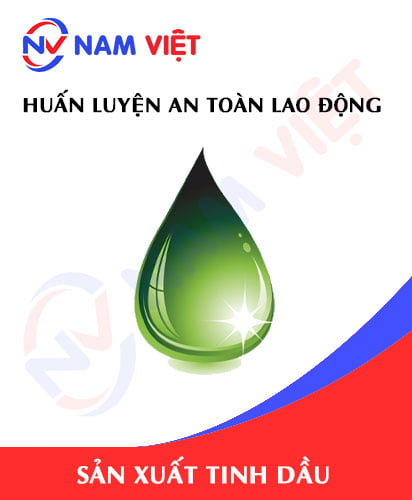
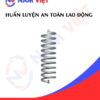
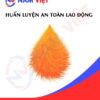







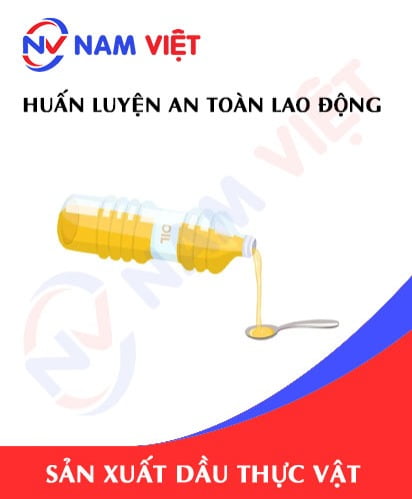


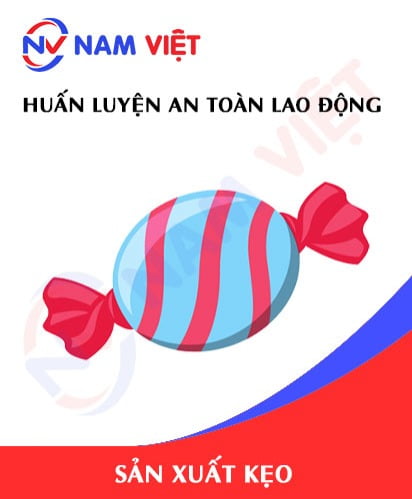
namchinh.haiphong341
Dịch vụ huấn luyện an toàn lao động rất tốt nhé, giảng viên dạy rất sinh động dễ hiểu!